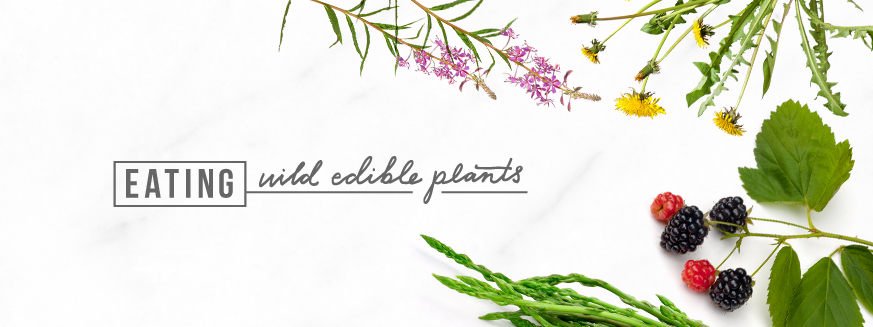The Fresh Blog
Lifestyle, Health, Nutrition & Inspiration from Luvo
Eating Wild Edible Plants
The idea of eating locally grown food has spread far and wide. The standard for many restaurants is to source as much of their menu as possible from farmers within a few hundred kilometres. But only eating items grown neatly in rows at a farm still leaves a lot of edible items uneaten—the wild ones. There are literally tons of fresh, wild plants in a field or forest near you that can add interesting flavors to your plate, or that you can munch on when you’re on a camping trip or hiking expedition. You just need to know what you’re looking for.
This goes without saying, but let’s say it anyway: not all wild plants are safe to eat. If you’re new to eating wild, carry a book with pictures on your first few forages, or bring along someone who knows what she or he is doing. The safest thing to do is focus on edible plants with no similar-looking versions that are poisonous. Now let’s get to the good part. Here are a few of our favorite common wild edibles.
Fireweed
First of all, it’s got a name that sounds like a metal band. It’s also beautiful, with bright pink and purple flowers and a tall, lean stem. You can eat early shoots, as well as young leaves and flower buds, which have a light peppery taste and add a punch of color to green salads.
Asparagus
Wild asparagus is much thinner than the stuff you get in stores, but it’s plentiful in many parts of the world and a great source of vitamins and minerals.
Here’s a great primer on how to find it, and here’s a lovely recipe for risotto with wild asparagus that will have you hunting for it in no time.
Berries
Some of the best wild edibles are bright, juicy and sweet berries. The type you’ll have access to depends on where you live. In many parts of North America, wild blackberries, raspberries and strawberries are common, and make great jam, jelly and wine. Here’s a guide to finding wild berries near you.
Seaweed
This should come as no surprise to fans of sushi, but few think of eating seaweed straight from the ocean. Of course, you’d want to rinse it first. It can be used in soups or eaten raw, or to wrap something up.
Garlic Mustard
This one is a bit generic-looking, but if you find it, it’s well worth it. It has a spicy flavor, and most parts can be eaten, leaves, roots, flowers and seeds. So get foraging.
Dandelion
Yep, that dandelion. The one that grows all over your lawn. Get your revenge by eating it all, flowers, roots and leaves. The flower petals make a nice bright garnish on soups, salads and dips. Want to try other edible flowers? Check out our recent post on the topic
What are you favorite wild edibles? Let us know in the comments and on Twitter at @luvoinc.


